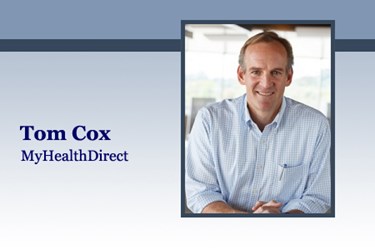Greater Efficiency Can Solve The Physician Shortage Problem

By Tom Cox, CEO, MyHealthDirect
The Association of American Medical Colleges (AAMC) warns the U.S. will have a shortfall of about 130,000 physicians by 2025. Many healthcare leaders are urgently calling for a nationwide effort to recruit and educate doctors as it takes a minimum of seven years to fully train a physician.
But there’s another way to solve the problem: increase physician efficiency and capacity.
The Medical Group Management Association (MGMA) estimates even the best-run physician practices lose 12 percent of their daily patient load due to no-shows and last-minute cancellations. Some practices have no-show rates considerably higher than that.
If 20 percent of the fans at an NFL game failed to show up, that franchise would be in big trouble. Fortunately, most stadiums are booked to full capacity. There are smart ways for physician practices to reach 100 percent capacity, too.
Even the AAMC’s Dr. Scott Shipman has noted that “small efforts to reengineer workflows and exploit technology could yield the capacity for millions of additional patient visits per year in the U.S.” reducing the anticipated need for more doctors. Our industry should take steps to improve the availability of doctors we already have before training thousands more each year.
This effort to rebalance consumer demand with physician supply is already underway. Here are some of the leading reasons why physician capacity and efficiency are on the rise:
- The Rapid Growth In Retail Medicine
Thousands of clinics are opening each year at retail locations like Walgreens and CVS. They’re primarily staffed by nurses and nurse practitioners who have long sought to practice at top of license whenever possible. They can clearly do much more than take temperatures and give shots. When nurses and NPs at retail clinics and urgent-care practices handle a community’s routine ailments — coughs, flu, minor wound care — it gives physicians more time and capacity to treat seriously ill patients.
- Long-Distance Digital Health (A/K/A Telehealth)
What the healthcare community is calling telehealth is a bit of a misnomer because it has nothing to do with the telephone. A better expression would be digital health — the ability for consumers to rapidly receive care across daunting geographical distances. Digital health helps balance the demand for specialty care with those who are capable of providing it. For example, there are no neurologists in many tiny rural towns — but there are plenty of them in Chicago and Atlanta. With digital health, a stroke patient can quickly get expert care — and the neurologist can fill an open slot in her schedule, ensuring that’s she’s working at full capacity.
- Self-Scheduling Technology
It’s commonplace for most Americans to schedule their own plane flights, hotel bookings, haircuts, and even cab rides. Yet the healthcare industry has been slow to harness this productivity-boosting technology. Studies show that it takes about 8 minutes to schedule a doctor appointment by phone, and most of that is wait-time and being transferred from one person to another. In contrast, a self-scheduled physician appointment takes less than a minute — and the appointment gets automatically entered into the practice’s system. The ability to self-schedule can dramatically lower the number of no-shows. And when patients receive text reminders, they’re five times more likely to keep a scheduled appointment. Scheduling technology can automatically alert consumers when there’s a cancellation so they can grab available slots, increasing doctors’ capacity to see more patients each day.
These transformative developments — retail medicine, remote digital healthcare, and self-scheduling — are helping doctors work smarter, allowing millions more patient to be seen without adding a single new physician. Let’s measure the effectiveness of these capacity-enhancing endeavors before we assume that there’s an alarming physician shortage.
